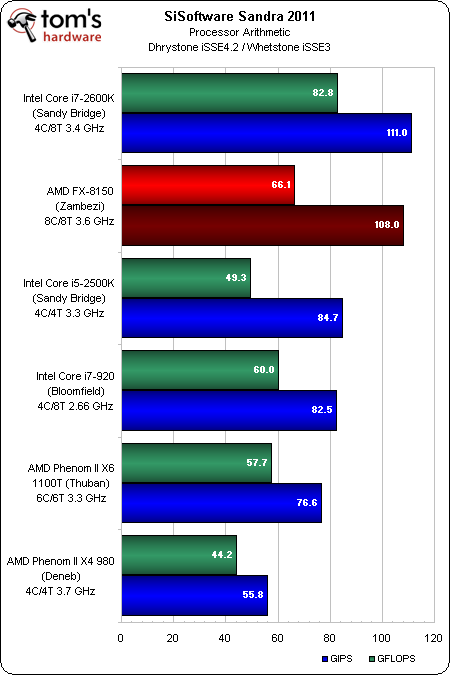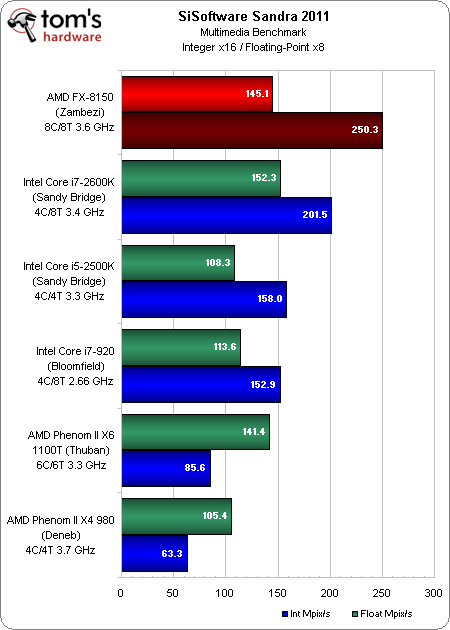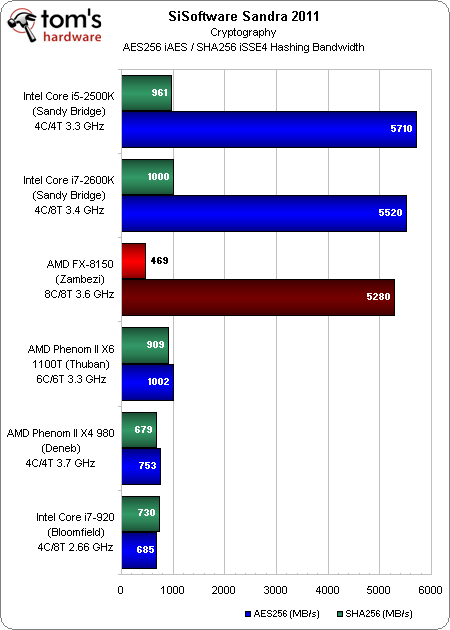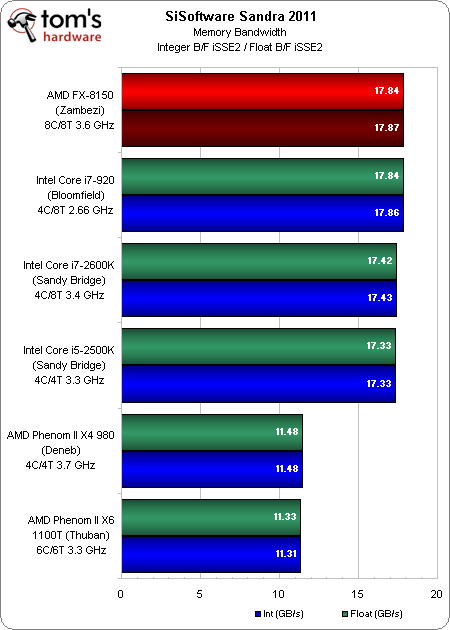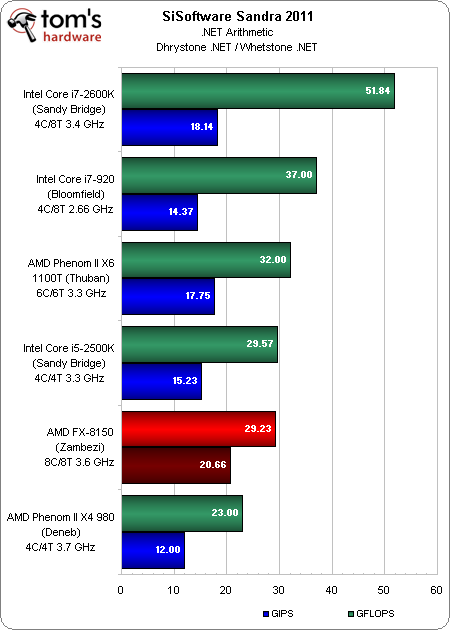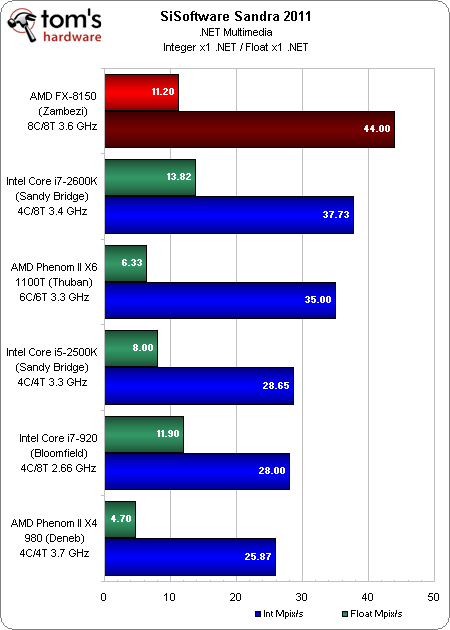AMD Bulldozer Review: FX-8150 Gets Tested
Perhaps the most hotly-anticipated launch in 2011, AMD’s FX processor line-up is finally ready for prime time. Does the company’s new Bulldozer architecture have what it takes to face Intel’s Sandy Bridge and usher in a new era of competition?
Benchmark Results: Sandra 2011
Integer and floating-point math are both improved in the Bulldozer architecture, allowing the FX-8150 to place second behind Intel’s Core i7-2600K. This is notable because, even though Zambezi only proffers four floating-point units between its eight cores, it’s still able to outpace Phenom II X6’s six using SSE3.
Exceptional integer SSE2 performance catapults FX-8150 ahead of Intel’s lineup in Sandra’s Multimedia metric. Shared floating-point units aren’t able to achieve the same results, though FX-8150 nearly matches Intel’s Core i7-2600K.
Hardware-accelerated AES support helps AMD achieve parity with what was once an Intel-only value-add, and FX-8150 achieves impressive throughput in that discipline, coming in right under the Core i5.
Signing with SHA-1 is a different matter entirely, as the Bulldozer architecture drops significant performance relative to Phenom II X6 and even X4 (not to mention all three of the tested Intel processors). Fortunately for the folks running full-disk encryption, AES is the more notable metric.
An updated dual-channel DDR3 memory controller officially supports data rates of up to 1866 MT/s, and AMD gets more bandwidth out of it than before. I’m using DDR3-1600 here for comparison, since that’s as far as my high-density 8 GB modules go. Still, it’s impressive to see AMD’s controller readily competing with Intel’s (especially compared to the Phenom’s throughput).
The Importance Of .NET
In addition to the familiar Sandra 2011 benchmarks, I also ran the .NET Arithmetic and .NET Multimedia tests. My line of thinking here is simple: with Windows 8 on the horizon (and Microsoft’s plans for Metro now on the table), the way each of these CPUs runs .NET code through the common language runtime will matter more. Until that layer is able to take advantage of AVX, for example, applications won’t benefit from hardware support, regardless of whether it comes from Intel or AMD.
Get Tom's Hardware's best news and in-depth reviews, straight to your inbox.
FX's FPU does well here, pushing 20.66 GFLOPS compared to Core i7-2600K's 18.14. More curious is Zambezi's integer performance, which trails Sandy Bridge by a sizable margin. According to Sandra's author, this could be a threading- or function-oriented issue that gets worked out in a future build, once he gets his hands on an FX processor. We'll have to keep an eye on this one.
Current page: Benchmark Results: Sandra 2011
Prev Page Benchmark Results: 3DMark 11 Next Page Benchmark Results: Content Creation